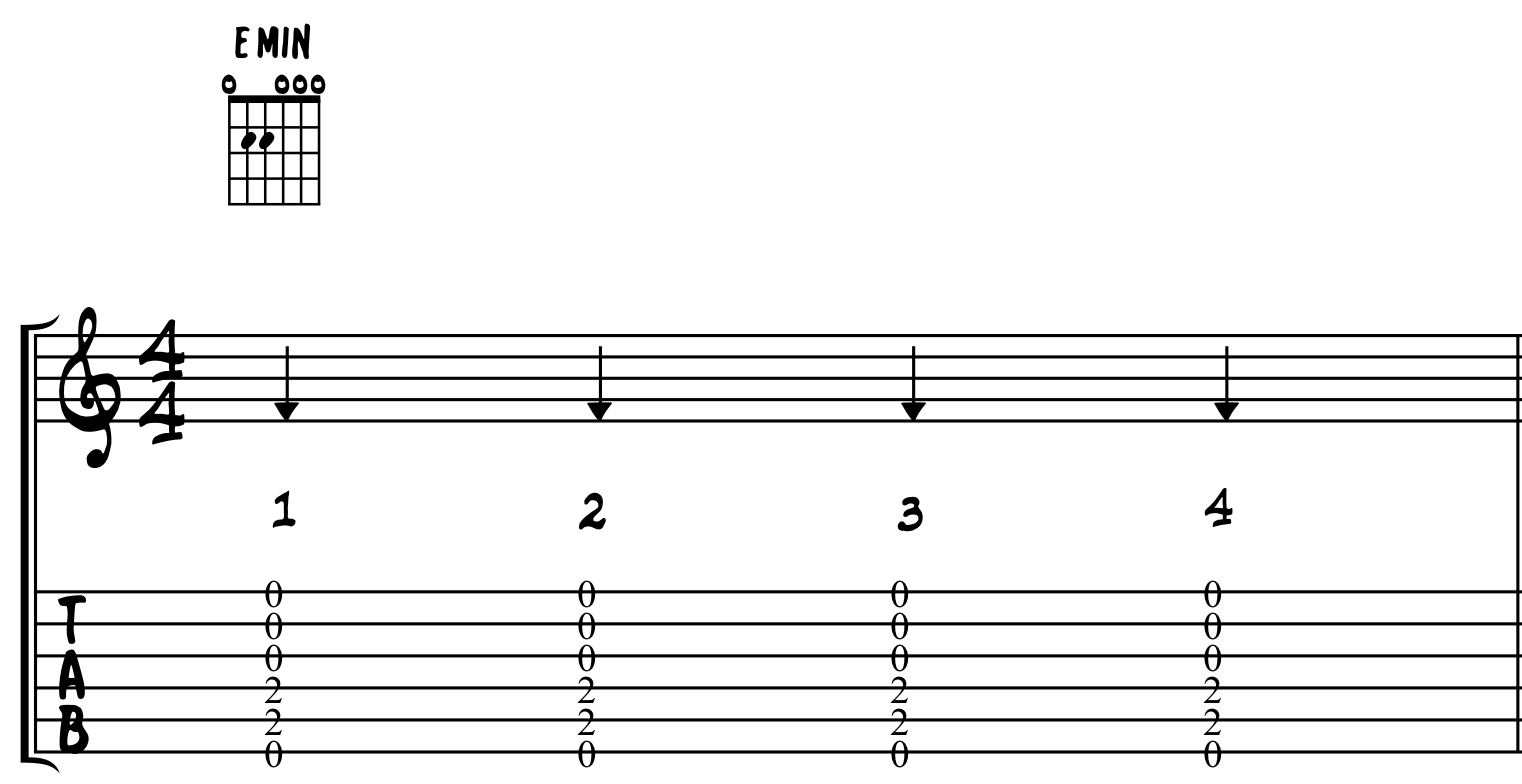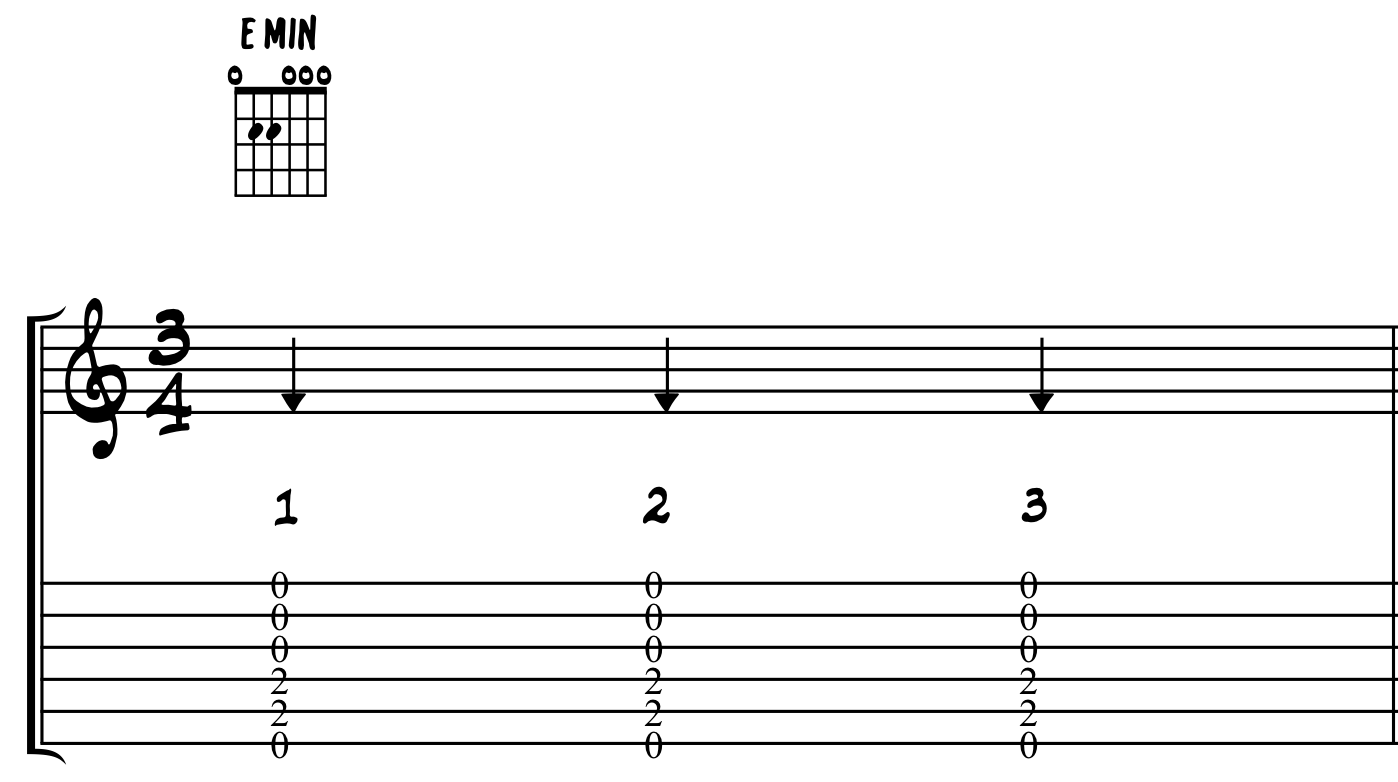Strumming On The Beat
Learning and fretting a chord successfully is only half of the equation. The other half is how to strum that chord with your picking hand. Strumming ranges anywhere from easy to extremely difficult. Strumming is all about keeping and staying in time with the music as well as strumming complex rhythms that sound good. This makes your picking hand a metronome. Understanding where the beat of the song lies is key to becoming a good rhythmic strummer. This lesson is going to focus on strumming basics with the beat of the song.
Song Beat
The time signature of a song determines the beat count for each measure of the song. The speed these beats occur determine the tempo of the song. This basic combination gives the music it's overall feel and speed. If you aren't familiar with time signatures or tempos, make sure to check out the lessons specifically on those topics.
Strumming Options
When it comes to strumming there are two basic options to think about when beginning. You can strum the guitar with a downwards motion towards the floor or you can strum the guitar with an upwards motion towards the ceiling. This is often referred to as a downstroke or an upstroke. There are a few other more complex strumming options and patterns but when starting simply think of down and up strums. This lesson we will only focus on downstroke strums.
Rule of Thumb When Strumming to the Beat
There's always a million ways you can play music. That is one of the great creative aspects of playing an instrument. Try out things and experiment. When it comes to strumming the same concept applies. If you can play how it's supposed to sound and it's working for you, then that's fine. There are some guidelines that can help you when coming to strumming. If you follow these basic rules you can get a hang of strumming quicker and rhythms should start to make more sense.
- Determine the time signature of the song. 4/4, 3/4, 6/8, etc.
- Determine the tempo. Are the song beats moving along slowly or rapidly.
- Anytime a chord is played on the beat it should be done with a downstroke.
Basic 4/4 Strum
When you are playing in 4/4 time you have 4 quarter note beats per measure. So if you count to 4 you have just counted one measure's worth of music. In this example you need to play the E minor open string chord on the beat. That means 4 strums of the E minor chord per measure. Each strum should be with a downstroke.

The down arrows on the standard music staff indicate you should be using downstrokes. The 4/4 symbol on the staff indicates the time signature. There are no tempo markings so you can play this example at any speed you like. Until you get comfortable with 4/4 time you should count in your head 1 - 2 - 3 - 4 as you strum. Keep everything steady and use a metronome to help keep consistent time.
3/4 Strum
The only difference between this example and the previous 4/4 strum example is that we have 3 quarter notes per measure. You still strum down on the beat even though the time signature has changed. Again count to yourself 1 - 2 - 3 as you strum to get used to 3 strums per measure rather than 4.

Putting it all Together
The examples so far have only just used one measure and one chord. Unfortunately most real songs aren't that easy and straight forward. Below is a simple chord chart in 4/4 time. This shows several open string chords in a chord progression. Play this example using the rules above and most importantly strum downwards on the beat and DO NOT PAUSE between chord switches. If you aren't comfortable with the chords on your fretting hand, get those down first before working on your strumming. The basic open string chords can be found here.
